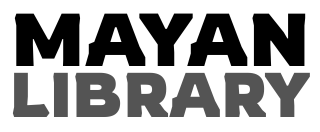Your cart is currently empty!

Mayan Languages: Yucatec, K’iche’, Q’eqchi’, Tzotzil
Explore the richness and resilience of Mayan languages—Yucatec, K’iche’, Q’eqchi’, Tzotzil, and others—and discover how communities are revitalizing these ancient linguistic treasures today.
Mayan languages are more than a means of communication—they are sacred vessels of memory, cosmology, and cultural resilience. Spoken across Mesoamerica for thousands of years, these languages encode the ecological wisdom, spiritual philosophy, and social systems of one of the world’s most sophisticated ancestral civilizations.
Today, over 30 distinct Mayan languages are still spoken by millions across Mexico, Guatemala, Belize, and Honduras. Each carries its own worldview, yet all share deep roots in a common ancestral past.
“Language is not just a tool for communication; it is a worldview, a way of being, a way of relating to the cosmos.”
— Linda Tuhiwai Smith (2012)
Major Mayan Languages Today
1. Yucatec Maya (Maaya T’aan)
Spoken mainly in Mexico’s Yucatán Peninsula, Yucatec Maya has over 800,000 speakers. It is used in daily life, ceremonial contexts, and increasingly in digital media, education, and radio.
2. K’iche’
With more than 1 million speakers, K’iche’ is one of the most widely spoken Mayan languages, especially in the western highlands of Guatemala. It is also the language of the Popol Vuh, the sacred book of creation.
3. Q’eqchi’
Spoken in Alta Verapaz, Petén, and Belize, Q’eqchi’ is deeply rooted in agricultural and forest-based lifeways. It plays a key role in indigenous ecological knowledge systems and rituals tied to the land.
4. Tzotzil
Used primarily in Chiapas, Mexico, Tzotzil is part of the greater Tzeltalan linguistic branch. It is known for its poetic metaphors and ceremonial expressions, particularly among Zapatista communities advocating for cultural autonomy.
5. Others
Languages such as Mam, Tojolabal, Chuj, Itzaj, and Lacandon reflect the incredible diversity of the Mayan world. Each language group maintains its own grammatical structures, oral traditions, and creation narratives.
Threats to Survival
Despite their richness, many Mayan languages face endangerment due to:
- Colonial legacies and assimilationist policies
- Urban migration and language shift to Spanish or English
- Limited educational materials in native languages
- Low representation in national media and public policy
“Every two weeks, a language dies. With it, we lose a way of understanding the world.”
— UNESCO (2010)
Revitalization Efforts
There is hope. Across bioregions, grassroots and institutional efforts are fighting to revitalize Mayan languages:
- Community schools using bilingual and intercultural education models
- Radio programs broadcasting in Yucatec, K’iche’, and Q’eqchi’
- Language apps and digital dictionaries
- Elders recording oral histories for digital archives, including contributions to the Worldwide Library Project
The Mayan Library, a sub-project of the Worldwide Library, is curating audio recordings, teaching materials, and ceremonial texts in native languages to ensure they remain alive and accessible for future generations.
Why Language Preservation Matters
Preserving Mayan languages is not just a cultural act—it is an ecological and political one. These languages offer irreplaceable insights into land stewardship, traditional medicine, astronomy, and community governance that are urgently needed in the face of global ecological crisis.
They also embody sovereignty, reminding the world that Indigenous nations never ceded their wisdom, their territory, or their voice.
How You Can Help
- Contribute stories or recordings in Mayan languages
- Donate to initiatives like the Worldwide Library
- Learn a few phrases in your local Mayan language
- Support Mayan-language media and education efforts
“To speak one’s native language is to return to the sacred.”
— Rigoberta Menchú Tum, Nobel Laureate
Internal Links (Suggestions)
- Mayan Library Project Overview
- Ancestrix: Reconstructing Our Lineages
- About the Worldwide Library Project
- How to Contribute or Donate
References
(APA Style)
- England, N. C. (2003). Mayan Language Revival and Revitalization Politics: Linguists and Linguistic Ideologies. American Anthropologist, 105(4), 733–743.
- Hinton, L., & Hale, K. (2001). The Green Book of Language Revitalization in Practice. Academic Press.
- Menchú, R. (1999). Crossing Borders. Verso.
- Smith, L. T. (2012). Decolonizing Methodologies: Research and Indigenous Peoples (2nd ed.). Zed Books.
- UNESCO. (2010). Atlas of the World’s Languages in Danger. Retrieved from http://www.unesco.org/languages-atlas
Get your Mayan Nahual Report
Unlock your Astro Origin. Enter your birth details below, and allow Librarian Josef Coach
to curate a unique Mayan Nahual and Sun of Birth Meta-Report.